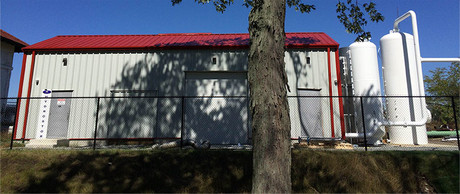Beyond batteries

The need, and potential, for energy storage technologies in Australia is high, and the country is ahead of the curve when it comes to implementing these storage solutions, according to Hydrostor President and COO Jon Norman.
Norman is a professional engineer with nearly 20 years’ experience in the power and environmental industries, management consulting and government. His company, Hydrostor, focused on Compressed Air Energy Storage (CAES), operates an adiabatic CAES facility in Toronto, and has developed a new CAES demonstration project at the Terramin Australia Angas Zinc Mine in South Australia.
Norman said Hydrostor’s CAES is different from traditional CAES as it doesn’t need to burn gas to put heat into the process when generating electricity, and it doesn’t require existing underground storage cavities, making the selection of sites more flexible.
“In our system, we actually take heat from our compression process and we store it in a thermal management system, we then reinject that heat back into our turbine when we’re generating electricity. So we don’t require any natural gas, it’s called an adiabatic process.
“What we do is quite different because we use water to compensate for our air pressure. This is what we’re building in Australia, we actually can purpose-build a cavity underground where we have an upper reservoir of water, and the cavity is like a lower reservoir, down about 300 metres into bedrock.
“When we’re compressing air into that cavity, it’s displacing the water up to the upper reservoir. Then when we’re ready to generate electricity, just the weight of the water pushes the air out and up into the turbine that’s on the surface.
“So we can generate a really large amount of electricity that way, and we can locate it very flexibly. We don’t need a pre-existing salt cavern, we can just site it and we build this cavity in areas of the grid where it’s actually required.”
CAES is similar to pumped hydro storage but doesn’t require as much water to provide the same generating capacity, said Norman. It also has a long life, lasting 30-plus years, as long as the rotating equipment on the surface is managed.
“We have a really big cost advantage over batteries as well. Even if you look at the current cost of batteries, plus all the balance of plants that they require and how they need to connect to the system. Our system for the given scale, if you were to build a 50- or 100-megawatt battery system, we would be about half the price,” claimed Norman.
“Clearly batteries will always have a place in the system located in a very distributed manner… where they provide very fast response times, but they cannot provide the level and duration of storage that we can provide.”
Potential for storage growth in Australia
Out of all the markets Norman is working in globally, he sees a lot of potential in Australia, with the retiring of fossil infrastructure.
“The system really does have a strong need for it, and the powers in charge of the electricity system are very much recognising that, and are taking actions to ensure that storage is developed, and can provide these kinds of services onto the grid.
“I think Australia is ahead of the curve, but there’s a number of other jurisdictions in the world that are really quite advanced in their thinking on storage as well. California comes to mind. Ontario is another place, as is Chile.”
And what can Australia learn from its international neighbours when it comes to energy storage?
“It’s important to recognise that there needs to be a clear opportunity to deploy capital to build these projects. That means there needs to be some level of revenue certainty, some level of political sustainability, some level of market certainty. Australia does many of these things well.
“Another area that’s important is just trying to complement the market structure, which is really providing short-term market signals. Like short-term price signals, saying today this is what something’s worth, but if you’re going to build a 30-year plus asset, there needs to be more recognition of the long-term benefit of that.
“Sometimes there needs to be outside contracting mechanisms to allow that to happen, to really facilitate the penetration and make sure that there isn’t just a very short-sighted view of the market price today, versus potential value of a 30-year asset, 10 years into the future. You kind of need a diversity of resources.
“Longer term infrastructure needs a bit more of that certainty, and you really need that mix of both to make the system work.”
Tackling energy insecurity in remote communities
Researchers from Flinders and Macquarie Universities have presented the benefits of community-led...
Paper-thin LEDs that are kinder to the eye
A new, experimental LED is nearly as thin as paper and emits a warm, sun-like glow.
How clear windows can harvest energy
Researchers have created a colourless solar concentrator that can be directly coated onto...




